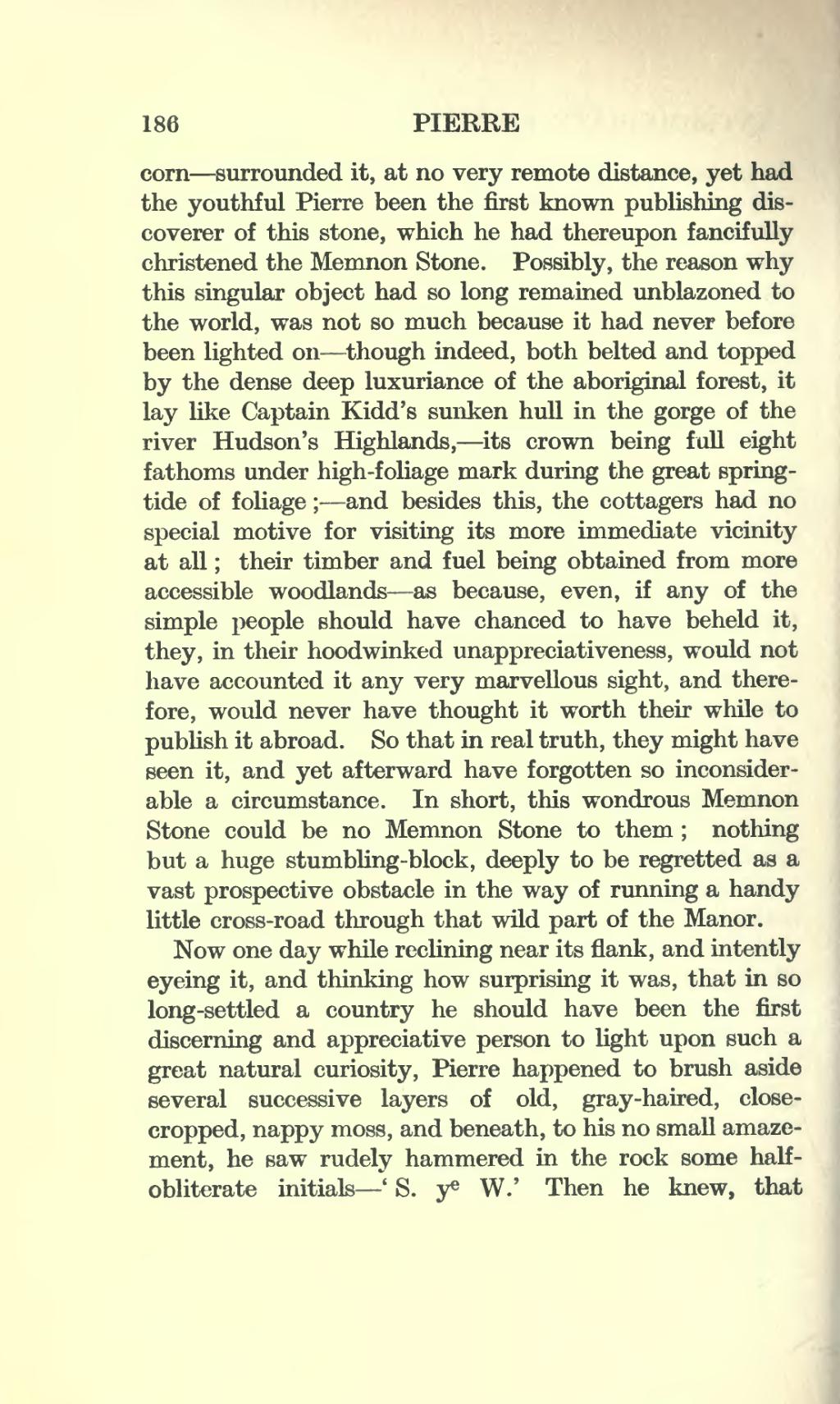corn—surrounded it, at no very remote distance, yet had the youthful Pierre been the first known publishing discoverer of this stone, which he had thereupon fancifully christened the Memnon Stone. Possibly, the reason why this singular object had so long remained unblazoned to the world, was not so much because it had never before been lighted on—though indeed, both belted and topped by the dense deep luxuriance of the aboriginal forest, it lay like Captain Kidd's sunken hull in the gorge of the river Hudson's Highlands,—its crown being full eight fathoms under high-foliage mark during the great springtide of foliage;—and besides this, the cottagers had no special motive for visiting its more immediate vicinity at all; their timber and fuel being obtained from more accessible woodlands—as because, even, if any of the simple people should have chanced to have beheld it, they, in their hoodwinked unappreciativeness, would not have accounted it any very marvellous sight, and therefore, would never have thought it worth their while to publish it abroad. So that in real truth, they might have seen it, and yet afterward have forgotten so inconsiderable a circumstance. In short, this wondrous Memnon Stone could be no Memnon Stone to them; nothing but a huge stumbling-block, deeply to be regretted as a vast prospective obstacle in the way of running a handy little cross-road through that wild part of the Manor.
Now one day while reclining near its flank, and intently eyeing it, and thinking how surprising it was, that in so long-settled a country he should have been the first discerning and appreciative person to light upon such a great natural curiosity, Pierre happened to brush aside several successive layers of old, gray-haired, close-cropped, nappy moss, and beneath, to his no small amazement, he saw rudely hammered in the rock some half-obliterate initials—'S. ye W.' Then he knew, that
